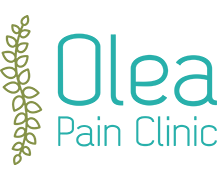Genicular Nerve Blocks and Radiofrequency
The anatomy of genicular nerves
The genicular nerves are responsible for the innervation and therefore pain sensation of most of the knee joint. The branches typically targeted by a genicular nerve block are the superior medial genicular nerve, the superior lateral genicular nerve and the inferior medial genicular nerve. Local anaesthetic and steroid nerve blocks can break the vicious cycle of pain in the knee joint. The improved ranges of movement and pain relief enabling rehabilitation and physiotherapy.
Genicular nerve block or radiofrequency procedure is a recognised treatments for pain caused by a number of conditions. These include: persisting pain after a partial or total knee replacement, degenerative joint disease especially in those patients who are not able to have surgery and other forms of arthritis.
Genicular nerve block and radiofrequency procedure
The procedure will take place in theatre under full aseptic conditions with the patient typically lying down with a pillow under their knee. A small needle in the back of your hand can be used to administer sedation or in case of an emergency. After the area is cleaned thoroughly, a numbing agent is injected into the site of the injection. The doctor will use fluoroscopy (X-ray) or ultrasound to identify the genicular nerves which will be targeted. The doctor will carefully inject the mixture of local anaesthetic and a steroid which acts as an anti-inflammatory medication offering both a diagnostic and therapeutic treatment . A genicular nerve block can break the cycle of knee pain by interrupting pain signals, offering a high level of relief to the patient.
A genicular nerve block can be followed by a genicular nerve radiofrequency procedure for a longer lasting effect. Lesioning (Radiofrequency neurotomy) of the nerves at a later date will only be indicated if there is a significant reduction in the pain levels after the block. This is a treatment we will detail below.
Radiofrequency neurotomy is a procedure which involves a heat lesion being created on specific nerves in order to interrupt signals to the brain. A genicular nerve radiofrequency procedure is performed in an operating theatre, and sedation may be used to relax the patient. Three needles are placed at positions along the genicular nerve pathway, with two needles above the knee and one below. On confirmation of the location, local anaesthetic is used to numb the area. The needles are used to apply a heat lesion to the nerve and interrupt its ability to send pain signals to the brain, offering relief to the patient.
Patients are then monitored in a recovery area before transfer to the ward and discharge home. Genicular nerve block and radiofrequency patients can return home on the day of the procedure. Patients may experience a numb feeling for a few hours. Pain at the injection site may increase for seven or more days. It is advisable to rest for 24 hours and resume stretches and exercises when the pain eases. This window of pain relief should be utilised for performance of strengthening exercises and rehabilitation physiotherapy.
Complications
There is a variable response to injection treatment. It is important to discuss both the benefits and risks of the procedure with your doctor before any agreement to undergo the procedure is reached. Although the risk of complications from a genicular nerve block or radiofrequency is very low, as with all surgical procedures, there is an element of risk involved with including failure to get benefit or pain aggravation. There may be an allergic reaction to the steroid or any of the medications, leg weakness or that the injection causes an infection in the joint or bleeding. Side effects can include a new area of numbness or altered skin sensation. Permanent nerve damage or paralysis is extremely rare.
